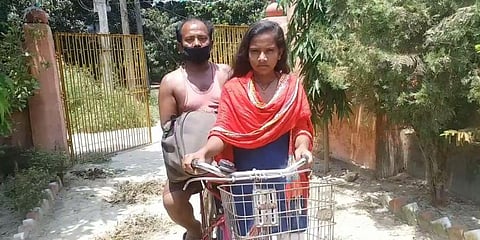

CHENNAI: In a country as vast and diverse as India, it is a novel idea to explore the uncharted path while scouting for talent. Not all of our athletes are on the official radar when they start. Unearthing them and making them a part of the system is an important task. Although more can be achieved, some work has been done in this sphere. This endeavour is more than three decades old. In the mid ‘80s, Limba Ram was found from a programme conducted in a tribal region of Rajasthan, aimed at discovering archers.
Around the same time, Manipur’s Kiran Khongsai made it to the national football team out of nowhere, opening India’s eyes to the talent pool in the Northeast. Subsequently, Sports Authority of India (SAI) launched its “special area games scheme” to identify and train promising youngsters from the tribal, hilly, rural and coastal communities. A number of them went on to shine at the Asian level.
The subject of tapping talent from obscure backgrounds becomes relevant in the light of two recent incidents. In February, the sports ministry sprang a surprise by inviting Srinivas Gowda to a trial at the SAI centre in Bengaluru. A participant in the traditional buffalo-racing competition called Kambala, Gowda was said to have run faster than Usain Bolt. This week, Cycling Federation of India (CFI) said it would ask Jyoti Kumari to appear in a trial. Daughter of a migrant worker, Jyoti had made headlines for cycling 1,200km from Gurugram to her village in Bihar, with her ailing father as the pillion.
While there is nothing wrong with thinking out of the box and taking the less explored route to find talent, one expects authorities to be more careful and selective in opening their arms and doors. To think that a man running with a buffalo can quickly attain the standards set for trained sprinters, or to expect a poor girl to deliver what can only be achieved after years of systematic training, is neither realistic not practical. Those holding important portfolios and entrusted with the job of spotting talent should be knowing that there is a process, without which it is impossible to make a mark in organised sport. If attempts are made to overlook tested yardsticks and forcibly fit something into the process going by headlines, they appear more like populist moves than well-thought policies. In other words, this amounts to playing to the gallery instead of making honest efforts to help promising athletes.
Both Gowda and Jyoti (for now) turned down the offers, saying that they want to concentrate on other things rather than a career in sports. What if they had said yes? Many state-run sports facilities in India have a shortage of seats. Only those coming through a screening process can find a place. Accommodating the likes of Gowda or Jyoti would mean denying those who have worked hard for years to get there.
CFI doesn’t have to do this. Deborah Herold, a 24-year-old who put India on the Asian cycling map, is the product of a talent hunt in Andaman and Nicobar. Her story shows that in unexpected pockets lie uncut gems who can be transformed into something more valuable through scientific and organised training. Tracking them and bringing them under a system will be a more productive venture than looking for talent from tales of human suffering in the times of pandemic.